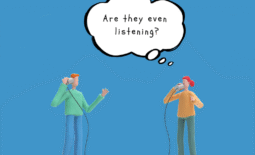Why It’s Hard to Sit Still in the Moment
In our fast-paced, always-on world, sitting still and being present in the moment can feel almost impossible. Whether we’re constantly checking our phones, rushing from one task to the next, or filling our minds with endless to-do lists, the idea of simply sitting quietly can be deeply uncomfortable. But why is this the case? Let’s explore the underlying reasons why many of us struggle to find peace in stillness.
The Constant Need for Distraction
One of the primary reasons we find it hard to sit still is our modern addiction to distractions. Technology, with its endless notifications and instant access to information, has conditioned us to expect constant stimulation (and maybe the dopamine hit while we’re at it.) This perpetual state of distraction prevents us from fully engaging with the present moment. When we try to sit still, we often reach for our phones or find something else to occupy our minds, avoiding the discomfort of being alone with our thoughts.
Fear of Confronting Our Emotions
Another significant factor is the fear of confronting our emotions. Sitting still often means facing feelings and thoughts that we’ve been avoiding. These might include unresolved issues, past regrets, or anxieties about the future. By keeping ourselves busy, we can temporarily escape these uncomfortable emotions, mainly because we don’t know how and/or are afraid we cannot handle facing them. However, this avoidance only serves to heighten our discomfort when we do finally pause, making stillness even more challenging. It’s a process that feeds upon itself and grows worse.
The Pressure to Be Productive
Society places a high value on productivity and achievement. From a young age, we are taught that being busy equates to being successful. This cultural pressure can make sitting still feel like a waste of time or even a failure. We may feel guilty for not doing something “useful” and thus avoid moments of stillness, fearing that they are unproductive or unworthy.
Conditioning from Childhood
Our upbringing also plays a crucial role in our discomfort with stillness. If, as children, we were constantly encouraged to stay busy or were not given the space to express our emotions, we might struggle with being still as adults. Early experiences of being told to “toughen up” or “keep going” can lead to an ingrained discomfort with pausing and simply being present. Also, the moment might be the very thing we found ways to run from and dissociate somehow, so we could cope. What child wants to be present for shaming, controlling…or worse? Their biological safety measures in their brain kicked in, and this became a pattern of coping.
The Role of Anxiety
For many people, and often for the reasons just mentioned, the inability to sit still is closely tied to anxiety. The modern world is filled with stressors that can make our minds race. When we try to sit quietly, our anxieties often surface, making us feel restless and uneasy. This heightened state of alertness can make it incredibly difficult to relax and be present in the moment. If this is added on top of learning vigilance in childhood, then it becomes very difficult if not impossible to sit and be.
Practical Steps to Embrace Stillness
While it can be challenging, learning to sit still and be present is possible with practice and intention. I encourage you to give this time and space, as you slowly acclimate to literally a new way of being. Be kind to yourself. Do a little bit each day, until you begin to feel safe enough to do so. Here are some steps to help embrace stillness:
- Start Small: Begin with just a few minutes of stillness each day. Gradually increase the time as you become more comfortable.
- Create a Calm Environment: Find a quiet, comfortable space where you won’t be interrupted.
- Focus on Your Breathing: Deep, mindful breathing can help anchor you in the present moment and reduce anxiety.
- Acknowledge Your Thoughts: Allow your thoughts and emotions to come and go without judgment. Recognize them, but don’t dwell on them.
- Find Safe People: You need a few safe people to slowly begin sharing your truth with. Over time, if you receive acceptance and validation, you will begin to heal and feel safer to sit with your emotions.
- Practice Mindfulness: Engage in mindfulness practices such as meditation, yoga, or simply paying attention to your senses and surroundings.
Sitting still in the moment can be difficult due to our addiction to distractions, fear of confronting emotions, societal pressures, childhood conditioning, and anxiety. However, by understanding these factors and taking practical steps to embrace stillness, we can begin to find peace and presence in our daily lives. It’s a journey worth embarking on, as the ability to sit quietly and be present can lead to greater self-awareness, emotional balance, and overall well-being.




